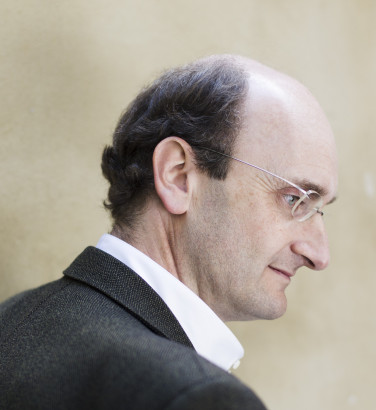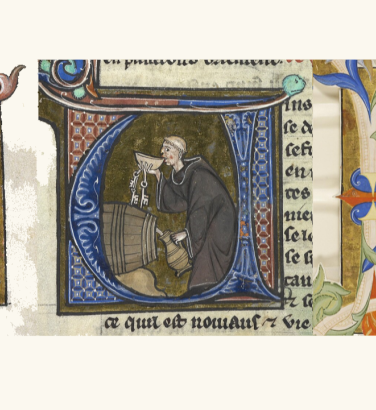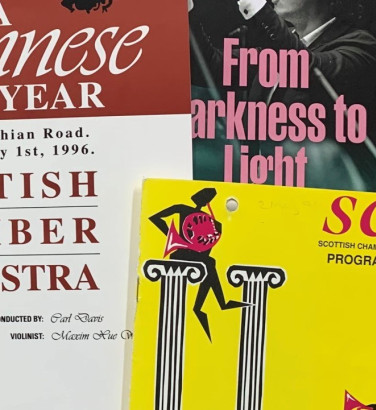
The viola concerto
23 Sep 2024
News Story
SCO Principal Viola Max Mandel (photo credit: Christopher Bowen)
This article is part of a series focusing on the concerto as written for specific instruments in the orchestra. With contributions from SCO players, we hope these give you some new insight into works you know and an idea of others they would recommend seeking out.
The viola was perhaps the slowest of any orchestral instrument to gain recognition as a viable solo instrument. Historically, its status had long been decidedly lowly, too often reduced to playing the same notes as the cellos and double basses. Right up to the dawn of the 19th century, it was often excluded from dance bands and even church music, making it to all intents and purposes the musical equivalent of the last child to be picked for teams in a playground game. In short, without ever having much of a chance to prove itself, the viola was overlooked.
While a small number of composers did write concertos for the instrument, it wouldn’t be until the early 20th century that these became something more than a series of flashes in the pan. The emergence of the violist Lionel Tertis, followed by William Primrose a couple of decades later, gave the viola’s reputation a welcome shot in the arm. As much as these two players commissioned music from several of the foremost composers of the day, we should not forget the work of violists outwith the UK: Maurice Vieux, Ladislav Černý and Vadim Borisovsky did much to raise the profile of the instrument in their native countries, respectively France and what was then Czechoslovakia and Soviet Russia. As a result, the viola concertos written over the last century have long since outnumbered all those composed previously.
When it comes to considering the best of these, the repertoire the SCO violists - Principal Max Mandel, Brian Schiele and Steve King - have to choose from is therefore decidedly skewed towards the 20th century. If anything, however, this heightens their appreciation for those works composed earlier. Standing head and shoulders above the rest is a work in which their instrument is paired with a violin, but Max and Steve are more than happy to make an exception for the masterpiece that is Mozart’s Sinfonia Concertante.
The two instruments are very much equal partners in this work, neither subordinate to the other. The solo viola is actually tuned a semitone higher than usual, which acts to counter the dominance of “the naturally louder violin”, to use Max’s words, as well as giving the solo viola’s E flat major chords “glorious resonance”, this different tuning allowing these to be played on open strings. (The orchestral violas are tuned as usual, but split into two parts throughout, “to enrich the sound”.) Consisting of “an epic first movement, a heart-wrenching second and a thrilling third,” it’s no wonder this work is such a firm favourite. As Steve puts it, the Sinfonia Concertante is ”beautifully crafted and contains some of [Mozart’s] best instrumental writing.” Come and hear this Sinfonia Concertante for yourself on 30 April-2 May, when Max performs it with Lorenza Borrani and the Orchestra.
Steve also makes a strong case for including the concertos by Bartók and Walton among the greats – the former (commissioned by Primrose) despite its perhaps lacks that final touch of “magic of colour and orchestration which marks Bartók as one of the world’s greatest composers”, no doubt because he died before he could complete it. Walton’s, on the other hand, is “a staple concerto” for the instrument: “very lyrical and well-written,” it allows the viola “to sing above the orchestra.”
Walton's is among those concertos to capitalise on the instrument's most soleful qualities, but it also shows off a more playful (if not mischievous) side to the viola, frequently leading the orchestra in a lively dance. This is something also present in Anders Hillborg's concerto, which receives its Scottish premiere at the Orchestra's Borealis concerts (31 October-1 November), a quicksilver exploration that traverses dazzling soundscapes.

Brian Schiele
Credit: Christopher BowenThis of course leaves swathes of lesser-known viola concertos. These go all the way back to Telemann, though his is perhaps more of a footnote (by virtue of being the first we know of), and extend into some known only to violists themselves, and even then largely as audition pieces. This is certainly the case for Stamitz's, a work Max feels is sorely underrated: for all the "fiendishly difficult and scary semiquaver octaves" given the soloist at the beginning, it's "very charming [...] with many beautiful moments and imaginative virtuosic" passages. Among the more recent concertos, our Principal Viola wishes Feldman's Rothko Chapel were better known: it is written for the striking combination of solo viola, choir and percussion, immediately creating an atmosphere which is "hauntingly beautiful and meditative".
Another little-known concerto with unusual scoring is Hindemith's Der Schwanendreher, the orchestra being shorn of both violins and violas. Rather like the Mozart Sinfonia Concertante before it, this allows the sound of the solo instrument truly to stand out, and is a work highly recommended by Brian, however "unfashionable" it may be. At the less contentious end of the scale, Brian also champions Vaughan Williams' Suite for viola and orchestra (a wonderfully evocative series of eight short movements) and – moving further afield – Takemitsu's "beautiful" and atmospheric A String Around Autumn.
It's worth also delving into the many works commissioned from British composers by Tertis and Primrose, both natives of these isles. There are several largely unfamiliar names among these composers, with York Bowen being of particular interest. A favourite recital partner of Tertis', his music for viola includes a warmly Romantic concerto and a good deal of chamber music, not least a pair of sonatas and a Fantasia for four violas.
It's in fact in this more intimate repertoire that our players feel that their instrument truly gets to shine: “what chamber piece,” Max asks, “doesn’t have a great viola part?!?” This can to a great extent be explained by its being the instrument of choice for many composers when playing chamber music themselves, among them Bach, Haydn, Mendelssohn and Schubert, and more recently Rebecca Clarke. Mozart also is more than deserving of a mention here, with a set of six string quintets to his name – among which the slow movement of No. 3 in C major, K 515, is particularly noteworthy. To all intents and purposes an expansive dialogue between the first violin and first viola (with the remaining trio of instruments providing the accompaniment), this almost doubles up as a supplement to his Sinfonia Concertante.

Steve King
Credit: Christopher BowenThat said, you don’t need a second viola to appreciate the importance of the instrument in this repertoire. Steve compares the string quartet to a bottle of wine in which – and bear with us here, he may not be entirely impartial – the viola is “the finest burgundy that money can buy, […] slipping down your throat [like] velvet”. (Less poetically, he goes on to describes it as “essential for creating the correct colour on the canvas of sound.”)
Brahms’ chamber music also boasts a wealth of characterful viola parts and is a particular favourite of Max’s: “every time I open a piece by Brahms I know I’m in for a special viola part”, he says, and the Sextet in G major is one he always enjoys rediscovering. This is a composer who “understood our role and colour better than most”, and he truly excelled in this work, giving both violas “so many juicy parts” to play.
The lack of substantial pre-20th century concerto repertoire for viola is the inevitable elephant in the room, however. "An original sonata or concerto by Beethoven, Schubert, Schumann, Brahms or Dvořák" would, in Brian's opinion, make up for substantial gaps in the repertoire, as would (more recently) concertos by "Kodály, [...] Britten, Tippett, Shostakovich, Stravinsky, Prokofiev and Dutilleux". Steve particularly agrees when it comes to Britten, whose profound understanding of the instrument’s “lyrical middle range qualities” would have granted the viola “a space in which to sing”. For Max, however, it's an earlier composer who comes to mind: on the strength of Mendelssohn's viola lines elsewhere in his oeuvre – “equal to the violin part” in the early string symphonies, “the full range of expression” coming across in his string quintets” – this was someone who clearly knew how to write for the instrument, and “he loved to give us a good tune” (as in the Scottish and Italian symphonies).
In the light of our greater appreciation of their instrument’s qualities today, however, both would also be keen to see contemporary composers write viola concertos. Sir James MacMillan would be Steve’s choice, a composer whose understanding of “space and colour” comes across in all his music; to be fair, this work would be the composer's second, following his 2013 Viola Concerto. Max, for his part, confesses to being a “huge fan” of Helen Grime, a composer from whom he would love to see a concerto for his instrument. Never say never!
Related Stories
![]()
Andrew Manze: "I've always loved Viennese waltzes and polkas"
1 December 2025
Our Principal Guest Conductor is really looking forward to conducting our Viennese New Year concerts!![]()
The medieval carol
24 November 2025
For this year's Christmas article, we look back at some very early festive carols ...![]()
A history of the orchestral concert
17 November 2025
Is there such a thing as a standard concert format? Join us as we dive into the history of programming ...


